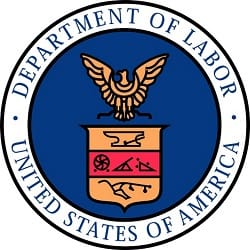Department of Labor Gives Guidance for Businesses Using Independent Contractors
Just last month, the Department of Labor (DOL) issued an opinion for businesses using independent contractors in today’s gig economy.
The letter tackles whether a worker is an employee or an independent contractor. That decision has a stark impact because workers who are classified as employees have significant legal protections, such as minimum wage, overtime, and employee benefits; whereas, independent contractors do not have those protections.
Fair Labor Standards Act
The Fair Labor Standards Act (FLSA) uses the six-factor economic reality test as a benchmark to determine whether a worker is an employee or a true independent contractor. The test measures the dependence of the worker on the principal by examining the degree of control by the principal, the permanency of the working relationship, the amount of the worker’s investment, the level of skill involved in the work, the worker’s opportunities for profit and loss, and the extent to which the worker’s services are integral to the principal’s business. The higher the control and permanency, and the less the skill, investment, and opportunity, the greater the chances are that a worker is an employee, rather than an independent contractor.
The DOL letter was in reference to an unnamed “online or smartphone-based referral service that connects service providers to end-market consumers to provide a wide variety of services, such as transportation, delivery, shopping, moving, cleaning, plumbing, painting, and household services.” The workers were service providers working for the end-market consumers – not the company. The company merely gave the service providers the opportunity to connect with the ultimate consumer. The DOL concluded the workers had “complete autonomy” over their hours of work and freedom to pursue external opportunities. This includes working with the referral service’s competitors. After an examination of the economic reality test, the DOL concluded that the workers were independent contractors.
Application to Other Independent Contractors
The same analysis applies to virtual taxi services, like Uber and Lyft. Although affiliated, drivers are not bound to work for one company. The drivers set their own hours and pick up as many people as they wish. In addition, drivers are not supplied cars. Instead, using their own vehicles to transport passengers. As a result of the test, Uber and Lyft drivers are true independent contractors, rather than employees. Therefore, are not entitled to minimum wage, overtime, or other benefits. The National Labor Relations Board General Counsel’s recent memo stated Uber drivers are independent contractors and do not have the same entitlement to protections. This finding aligns with the memo.
This is a dynamic and controversial issue in our economy, about which workers and businesses will continue to experience conflict. Remember, advice memos and opinion letters are great resources, but the ultimate decision-makers are the courts. In other words, this guidance is subject to change. Businesses using independent contractors should seek legal counsel to ensure they are in line with the requirements under the law.

